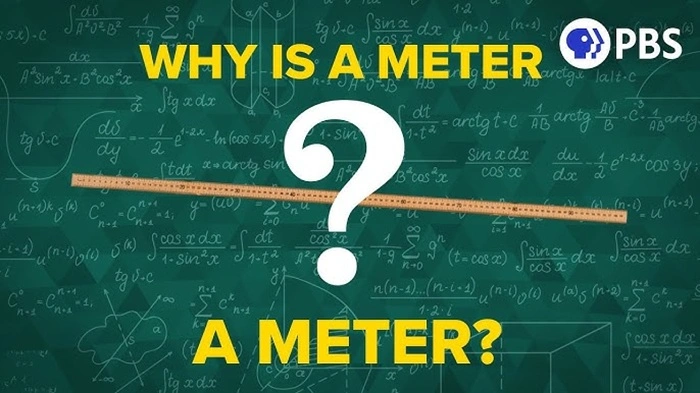How Far is 10 Meters? Understanding the Distance in Context
When it comes to measurements, one common question that may arise is: “How far is 10 meters?” While this might seem like a straightforward question, understanding the context and visualization of distances is crucial, especially when comparing it to familiar objects or common experiences. In this article, we will explore how far 10 meters really is, provide practical comparisons, and discuss its relevance in different fields such as sports, construction, and everyday life. Whether you are trying to estimate distances in a park or calculating lengths for a home project, this guide will help clarify the concept of 10 meters.
What Does 10 Meters Represent?
10 meters (m) is a unit of length in the metric system, equivalent to 1/100th of a kilometer or 10 times a meter. The metric system, used globally for scientific, everyday, and commercial measurements, offers a convenient way to understand and calculate distances. In practical terms, 10 meters is relatively short, but it is still significant when comparing it to everyday objects. To gain a clear understanding of this measurement, let’s take a look at various visual comparisons that will help us comprehend just how far 10 meters is.
Visualizing 10 Meters
1. Two Car Lengths
One way to visualize 10 meters is by considering the average length of a car. A typical car in the United States or many other countries measures approximately 4 to 5 meters long. Therefore, 10 meters is roughly equivalent to the length of two average cars placed end-to-end. If you stand next to two parked cars, you will have covered the distance of 10 meters.
2. Swimming Pool Width
Another useful comparison is a standard Olympic-size swimming pool. The width of such a pool is generally 10 meters. This allows us to understand that 10 meters is about the span from one side to the other of a full-sized swimming pool, which most people can easily picture.
3. The Length of a Room
In many homes, a typical living room or bedroom is around 10 meters in length. If you walk across the room in a standard apartment or house, you are likely covering a distance close to 10 meters. This practical example helps people better visualize what this distance feels like in daily life.
4. A Bus Length
Public transportation vehicles, such as buses, are often used as another relatable comparison. A typical city bus is around 10 meters in length. This means that the length of a bus on the road, from front to back, spans the exact distance of 10 meters.
5. Tennis Court Dimensions
In the sport of tennis, a singles court has a length of 23.77 meters, while the width is 8.23 meters. Therefore, 10 meters represents a little more than the width of a tennis court, making it easy to imagine when you think about the space required for sports and recreational activities.
Practical Applications of 10 Meters
Sports
In sports, distances of around 10 meters are commonly used for measuring sprinting events, jumping distances, and field activities. For example, in track and field, sprinters often compete in events that are shorter than 10 meters, such as 5-meter sprints in training. A 10-meter race is a frequent distance used in testing acceleration and agility, especially for sprinters and athletes looking to improve their quickness.
Similarly, in sports like football (soccer), the 10-meter line is frequently used as a reference point for set pieces, especially for corner kicks or free kicks. Even in American football, 10 meters is roughly equivalent to 10 yards, a standard unit of distance used to mark off progress in the game.
Construction and Design
In construction and design, 10 meters is an important measurement for architectural and engineering projects. It’s used to gauge the height of small buildings, the width of rooms, and the layout of urban areas. A single-story building in many regions may be designed with a floor-to-ceiling height of around 3 meters, meaning a 10-meter building could be roughly three stories tall.
10 meters is also important when considering distances for safety regulations and planning, such as when designing pedestrian pathways or fire safety zones, where minimal distances between certain structures or areas must be maintained.
Everyday Activities
In our day-to-day lives, distances of 10 meters are encountered in several simple ways. Walking across a parking lot, measuring out space for furniture, or determining how much room is required for a small project or garden can often involve estimates of this distance. Additionally, when participating in activities such as running or cycling, individuals may often use the 10-meter mark to pace themselves or set goals.
The Metric System: Why It Matters
The metric system is used globally as the standard for measurement in science, industry, and daily life. It is based on units of 10, which makes calculations and conversions simpler. Understanding how far 10 meters is in relation to other units of measurement like centimeters, millimeters, and kilometers can help with better understanding of both smaller and larger distances.
For example:
- 1 meter = 100 centimeters
- 1 meter = 1,000 millimeters
- 1 kilometer = 1,000 meters
Being able to convert between these units efficiently is a skill in many professional fields, such as engineering, architecture, and construction. Understanding the context of 10 meters is essential for making accurate measurements and performing necessary conversions.
How Far is 10 Meters in Miles and Feet?
- In Miles: 10 meters is approximately 0.0062 miles.
- In Feet: 10 meters is about 32.8 feet.
These conversions are useful for those more familiar with the Imperial system of measurements, helping bridge the gap between different methods of measurement around the world.
FAQs
1. What is the equivalent of 10 meters in feet?
10 meters is roughly 32.8 feet.
2. How far is 10 meters in miles?
10 meters is approximately 0.0062 miles.
3. How can I visualize 10 meters?
You can visualize 10 meters as the length of two average cars parked end-to-end or the width of a standard Olympic swimming pool.
4. What is 10 meters used for in sports?
10 meters is a common reference for measuring sprint distances, field goals, and agility in sports like tennis and track and field.
5. How tall is a 10-meter building?
A 10-meter building is typically around 3 stories tall, with each floor having an approximate height of 3 meters.
In conclusion, 10 meters is a relatively short but significant distance in various fields. Whether you’re measuring a room, a small building, or engaging in sports, understanding how far 10 meters is can help you better visualize distances and make informed decisions in everyday life. From cars to swimming pools, this measurement is something we encounter more often than we realize. The metric system allows for ease of conversion and accurate calculations, making 10 meters an essential part of daily measurements worldwide.









